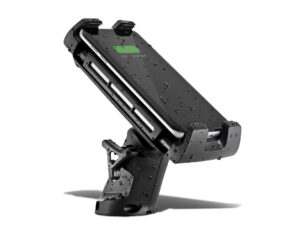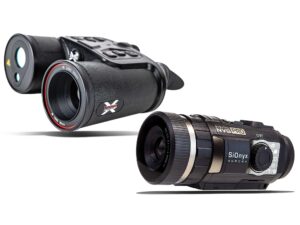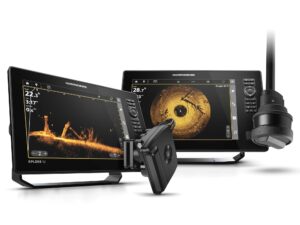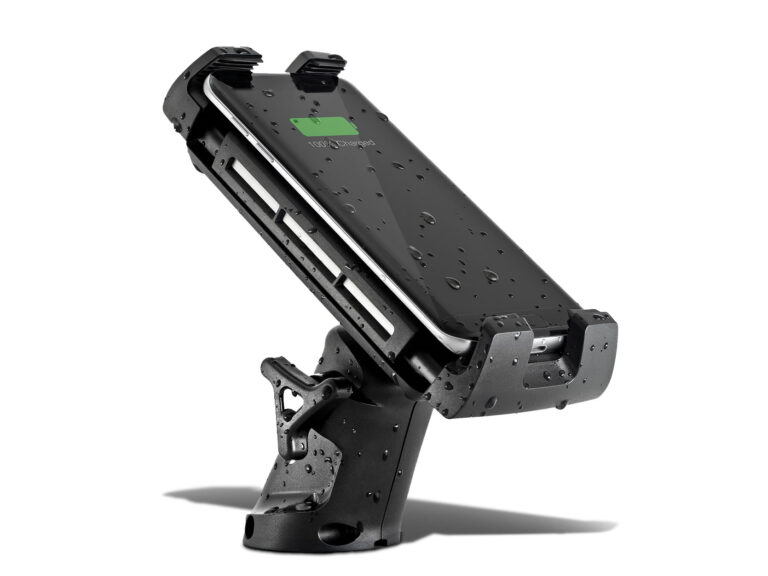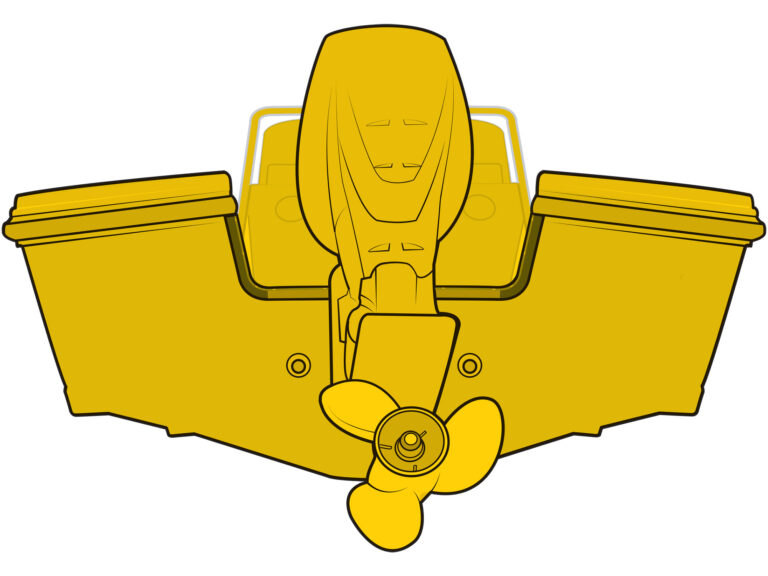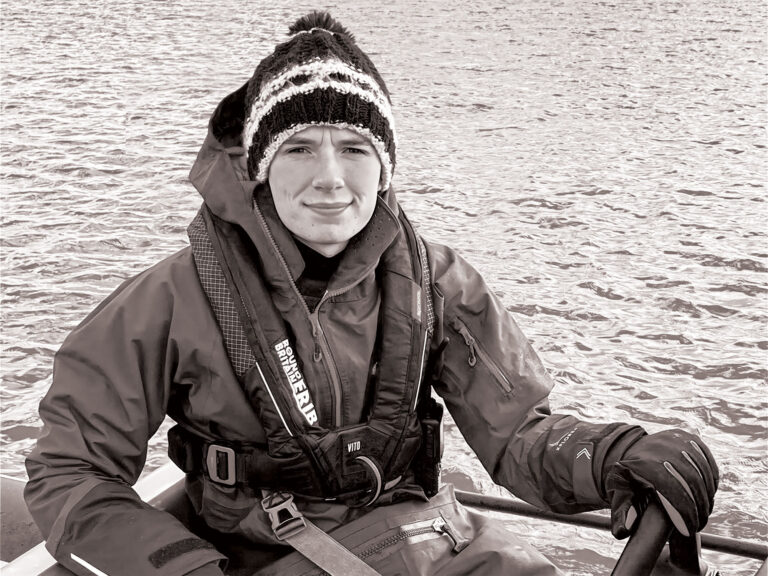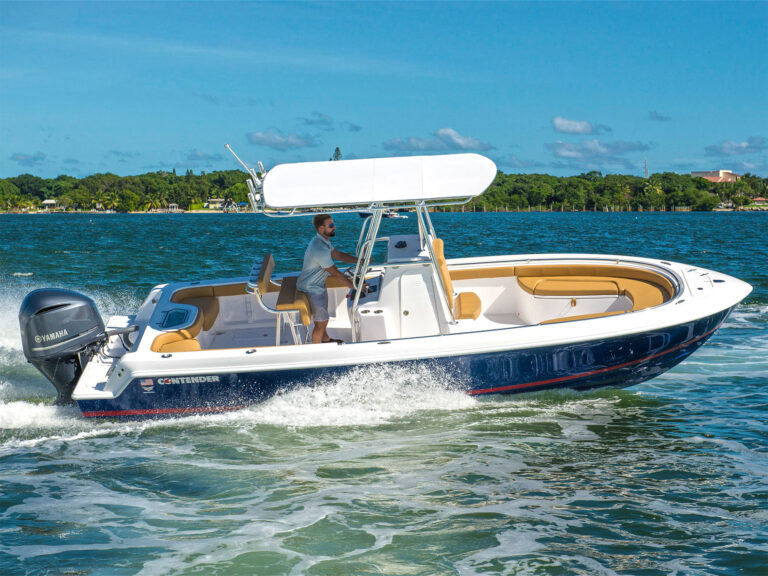** SCREEN SIZE** is extremely important. It dictates how far away you can see the screen and how legible the information is on it. This is particularly important when everything is compressed in the split-screen zoom function. Look for units that are at least 2½”-by-3″ (4″ diagonal). Screens more than 3″-by-3″ (41⁄4″ diagonal) are notably better, and those that have at least one dimension over 4″ (5″ diagonal) are best.
RESOLUTION will determine how much detail the unit can provide. This is another incredibly important aspect because low-res screens may blend fish in with the bottom or with structure, so it looks as if they’re not there. The ability to detect fish closely hugging solid forms and register them distinctly as separate targets-“target separation” in fishfinder parlance-is critical. Resolution is measured by the pixel count. The more pixels, the better. Minimalist units provide a little more than 100 pixels by a little fewer than 100 pixels (128-by-64, for example). The best low-cost units provide more than 400-by-400 pixels.
COLOR is worth the money because it enables you to catch more fish. Having a wide range of colors, rather than tones of gray, helps you determine how dense a return is, indicating whether it’s bait, small fish, large fish, or merely a thermocline. It’s second to resolution in determining how easy or hard it will be to know what you’re looking at.
POWER in watts, gives you an idea of how far down the unit will accurately read. Fishfinders in this price range put out between 50 and 500 watts. If you’re fishing in water that’s 80′ or less, 50 watts is all you need. But if you must reach a depth of 120′ or 130′, then 100 watts will serve you better. Plus, more wattage will let you punch through even deeper (see Transducers). You’ll often see power noted as “watts RMS.” This describes the unit’s constant power output. “Watts peak to peak” refers to extreme spikes of power and isn’t a useful figure.
TRANSDUCERS also play a role in how deep the unit will read. The larger the transducer’s crystal, the more focused the beam it sends out and the deeper it will penetrate. Doubling the transducer crystal’s diameter has the same effect as quadrupling the output power. (Think of a flashlight set to spotlight, instead of flood.) A fishfinder pushing 100 watts through a 4″ transducer will see just as deep as one pushing 400 watts through a 1″ transducer. Depending on where you buy the unit, it may be packaged with a specific transducer, or you may be given a choice. In most cases you’ll be offered a 100-watt unit with a 1″ crystal.
WATERPROOFING should be considered for a small open boat. Most units can handle some spray without too much problem. But any fishfinder that’s labeled “submersible,” as opposed to “water resistant” or “waterproof,” is a big plus. Stay away from units that are marked “splash resistant,” which is code for “will fry when wet.”
BUTTONS should be big and well placed, especially on a small boat that will be bouncing around. Wrap your right hand around the side of any unit you’re considering. You should be able to hit all of the important keys with your thumb. Left-handed? On most units, you’re out of luck.
PLUGS on some low-cost units fail in short order. Those that twist and lock are better than the ones you simply push in. They should also have a gasket to keep water off the pins, and thicker pins are better than thin ones, which can bend easily. Also, look for thick plastic in the locking collars, which help them resist shattering if you squeeze them tightly in cold temperatures.
WATER TEMPERATURE readings are included with many units but not all. Look for those with the temperature probe integrated into the transducer. Otherwise, you’ll have to purchase, rig, and run an additional wire to the transom.
DUAL FREQUENCY is handy if you think you may head for deep water. Most economy fishfinders put out 200kHz. But a lower frequency (commonly 50kHz) will penetrate deep water better and may enhance performance in depths greater than 300′. If you don’t plan to fish any deeper than that, it’s unnecessary.
DATA INTERFACE lets your unit talk with other gadgets. For example, you may want your fishfinder to tell your chartplotter the depth or temperature of a specific spot. To do this they both must speak the same language (NMEA-0183 or NMEA-2000, for example), which may not be the case even if they’re made by the same manufacturer.
MOUNTING is a personal matter. Flush-mounting looks best, but you’ll have to cut a hole in the dash. Bracket mounts are easier to rig but leave the back of the unit exposed to the weather, and if it’s a tall dash, it may even block your view through the windshield. Quick-release mounts are good for trailered boats on which you should remove everything of value when the boat is stored.

